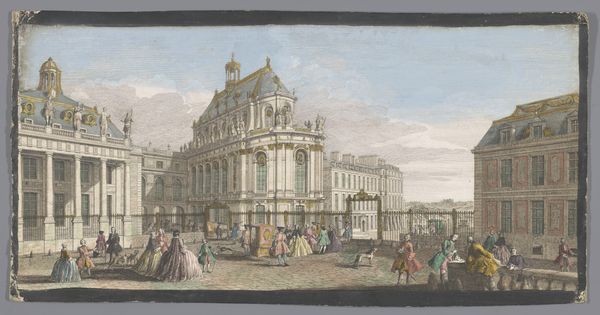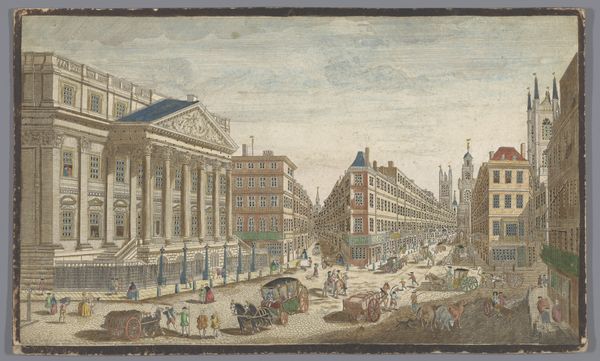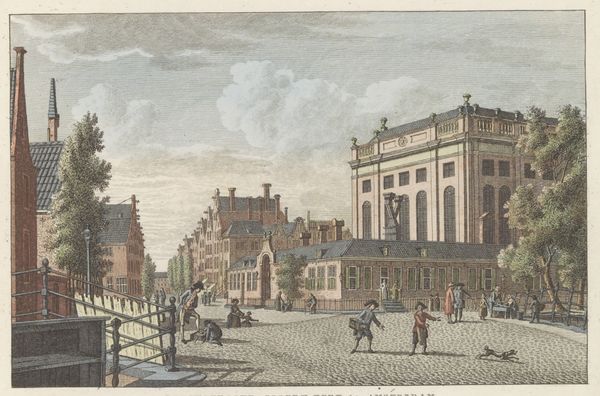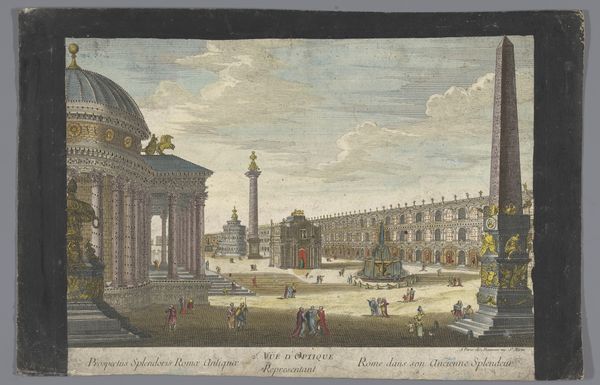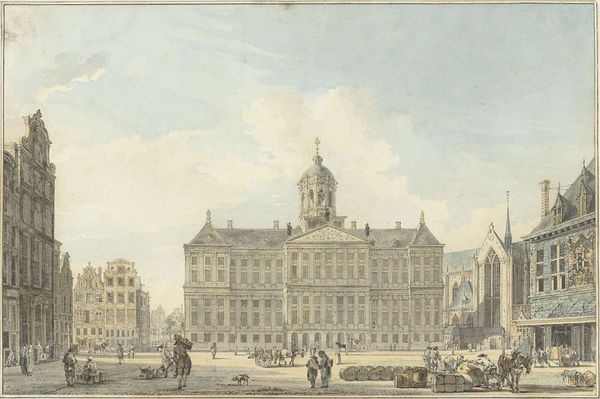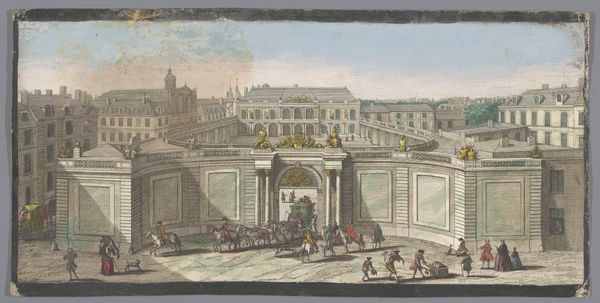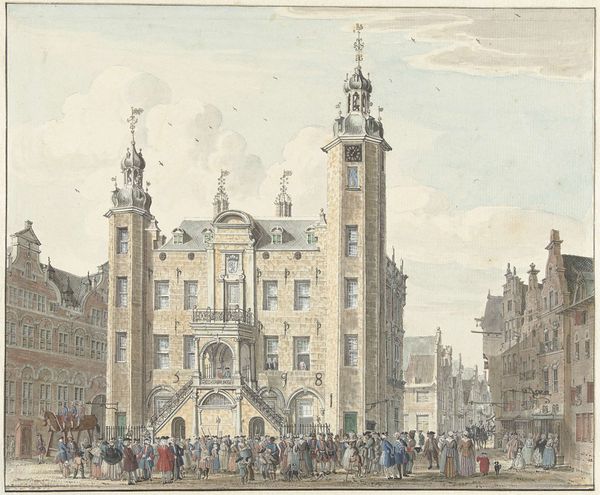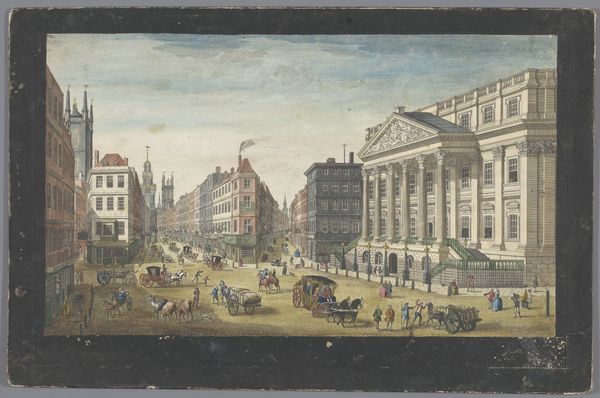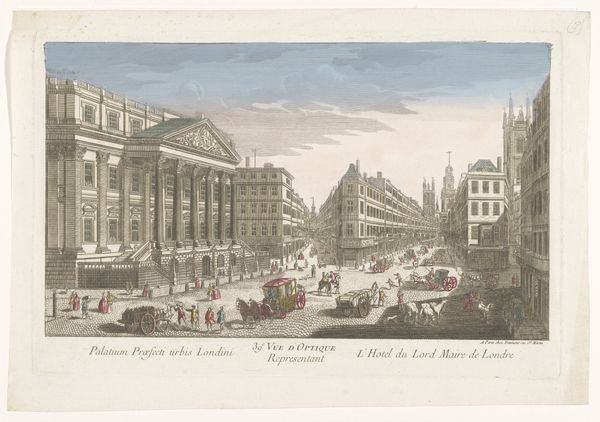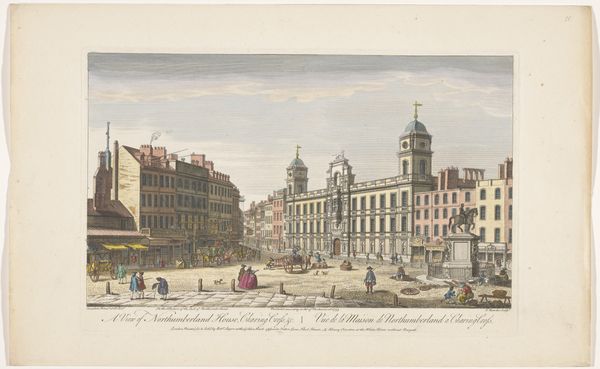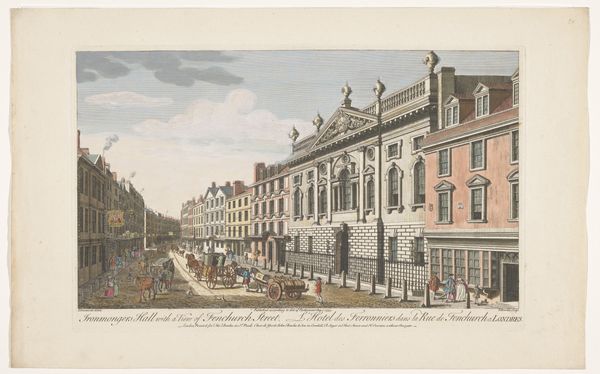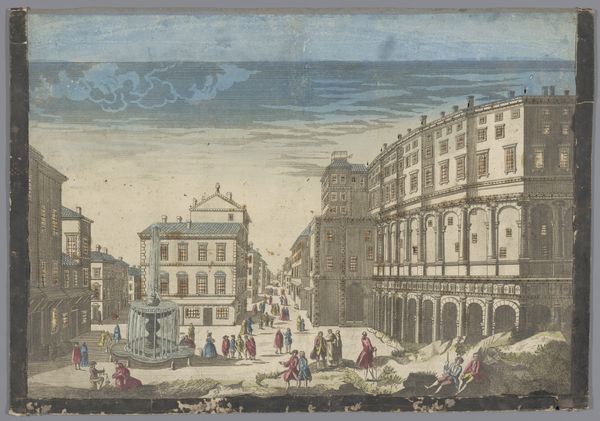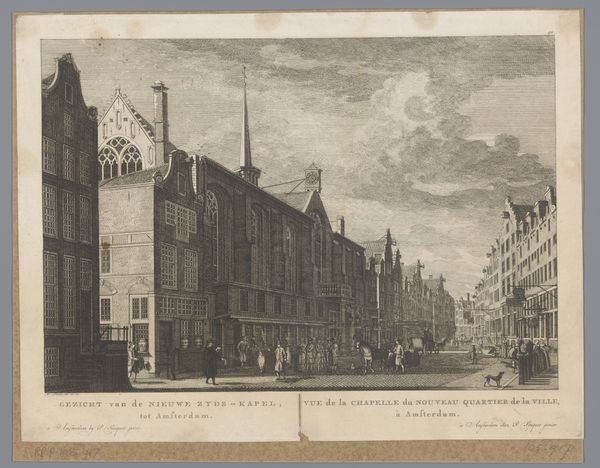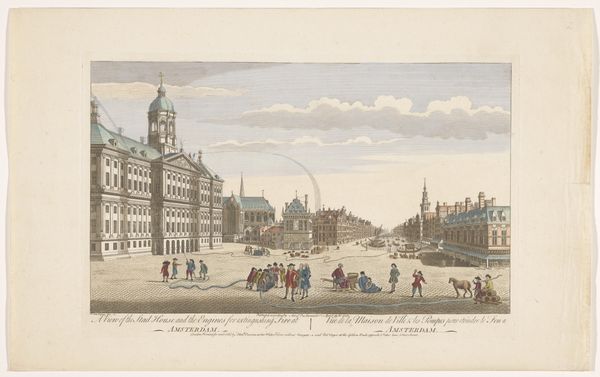
Gezicht op het Stadhuis, de Nieuwe Kerk en de Waag op de Dam te Amsterdam 1753 - 1799
0:00
0:00
drawing, watercolor, pencil
#
drawing
#
watercolor
#
coloured pencil
#
pencil
#
cityscape
#
watercolor
Dimensions: height 267 mm, width 385 mm
Copyright: Rijks Museum: Open Domain
Curator: Look at this cityscape by Pierre Fouquet, titled "Gezicht op het Stadhuis, de Nieuwe Kerk en de Waag op de Dam te Amsterdam," dating from around 1753-1799. Editor: It feels meticulously rendered, almost architectural in its precision. There's a quiet order to the composition despite all the bustling activity it depicts. Curator: Absolutely, Fouquet uses pencil, watercolor, and what appears to be colored pencil to create a layered effect, typical of drawing techniques used to document and circulate city views during the Enlightenment. It speaks to emerging visual technologies like printmaking at the time. Editor: Yes, and the layering really brings out the monumentality of the buildings - the Stadthuis, the Nieuwe Kerk, and the Waag – which loom over the figures populating the Dam square. I find the perspective striking. It positions us within this civic space. Curator: He's interested in the texture of daily life; notice the laborers, vendors, and well-dressed figures interacting. It highlights Amsterdam's commercial vibrancy during that period. The scale of that activity becomes the foundation that enables those grand buildings. Editor: I agree, the color palette is fascinating—restrained, almost muted blues, grays, and browns dominating, save for small dabs of warmer hues highlighting social activity, bringing the scene to life. The material components reinforce its intent for a documentary realism, in its style as well as the material used. Curator: Right, a visual document reflective of the societal stratification that characterized the city during its commercial apex and the artist’s role within it, creating and capturing those moments. Editor: This really highlights the essence of the place and its architectural dominance, and, yet also its material representation. The drawing emphasizes its visual aspects and structural forms but opens up new understanding as well. Curator: Precisely, engaging with both its process and structural meaning gives us fresh insight into the nexus between art, craft, and urban experience in 18th century Amsterdam. Editor: Yes, and considering his choice of watercolor, one can observe how Fouquet captures the very atmosphere and materiality of Amsterdam itself.
Comments
No comments
Be the first to comment and join the conversation on the ultimate creative platform.
